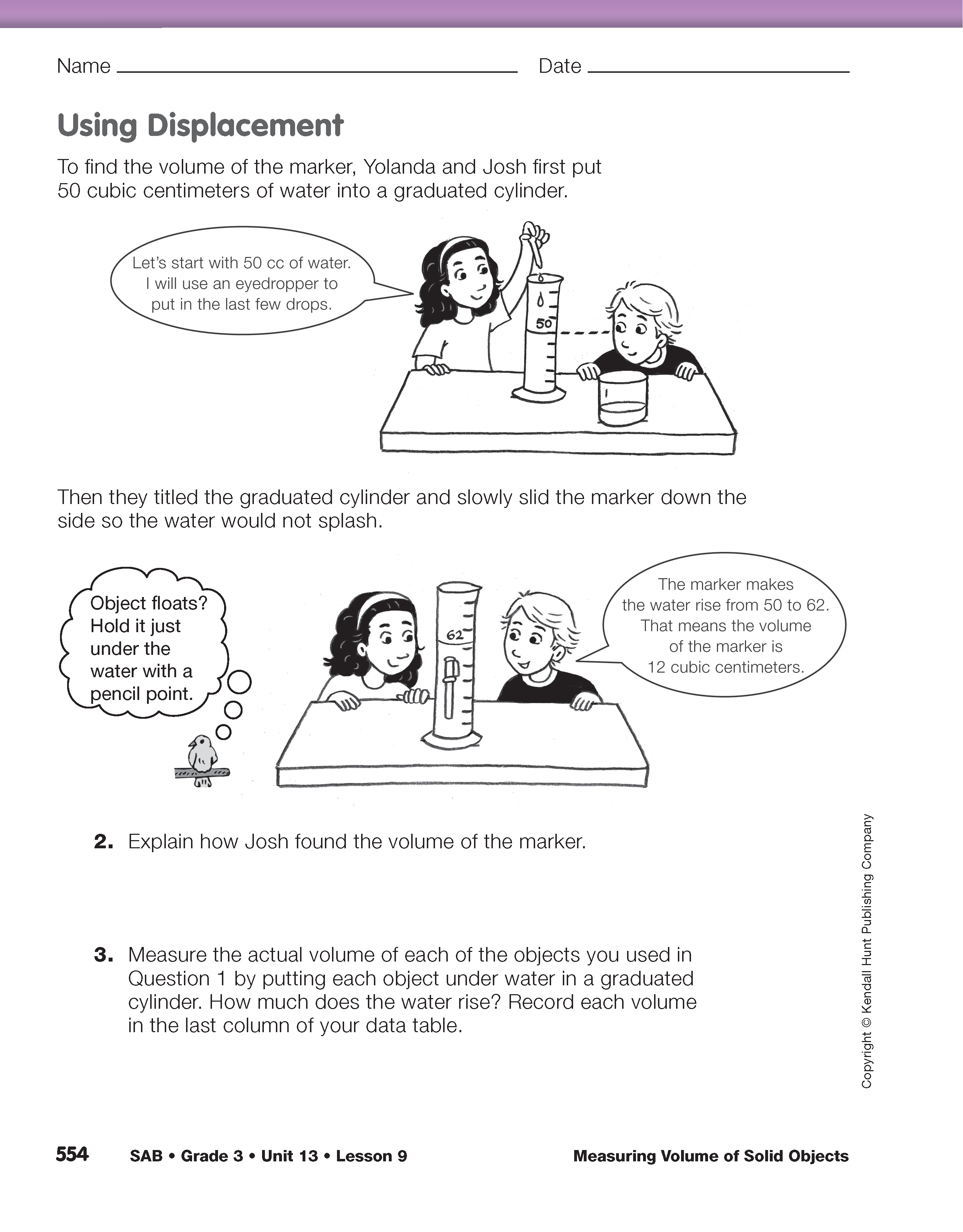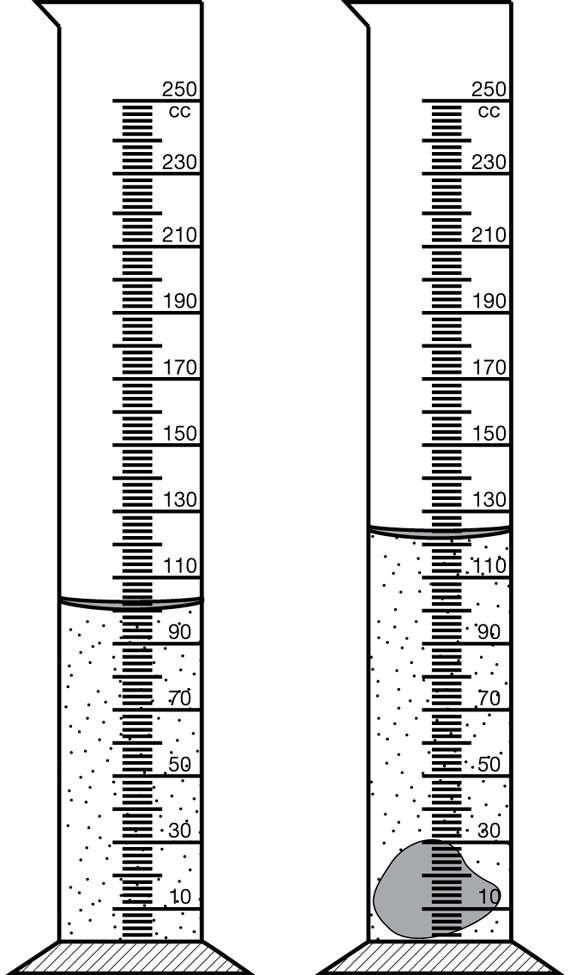Measuring Volume of Solid Objects
Est. Class Sessions: 2–3Developing the Lesson
Part 2. Measuring the Volume of Solid Objects Using Displacement
The Using Displacement section of the Yolanda Measures Volume by Displacement pages in the Student Activity Book reviews how Yolanda and Josh found the actual volume of a marker using the displacement method. See Content Note.
To measure the volume of a solid object, students fill a graduated cylinder with an amount of water that makes it easy for them to calculate the water rise. For instance, if students fill a 250 cc graduated cylinder with 100 cc of water and the water rises to 122 cc when they put the object inside, as in Figure 1, then students can easily subtract 100 from 122 to find the volume, 22 cc.
The object displaces, or pushes aside, its volume in the water, causing the water level to rise. Since the water volume is constant, the new water level can be explained as the volume of the water plus that of the object. To find the volume of the object alone, subtract the starting water level from the final water level.
After reading this section, assign Question 2. Have students discuss with a partner how Josh found the volume of the marker.
Display the Graduated Cylinders Master and facilitate a class discussion by asking:
Tell students if the object floats to push it under the surface of the water and hold it in place until they can read the level of the water. A thin “pusher,” such as the tip of a pencil, a straightened paper clip, or a pin is better to use than a large pusher because the additional volume of a thin pusher will be minimal. If students use a large pusher, such as a finger, their reading for the object's volume will not be accurate.
Ask:
Distribute graduated cylinders, eyedroppers, and containers of water to student groups. Have paper towels available to clean up spills. Students will need the same items that they used in Question 1, when they built models and estimated volume.
Assign Question 3 of Yolanda Measures Volume by Displacement in the Student Activity Book. It directs students to find the actual volume of each object from Question 1, using the displacement method. As you observe students working, check that they are recording the volume of the objects only and not the volume of the water and the objects combined. Figure 2 shows a sample data table with examples of small objects, their estimated volume, and their actual volume.

















